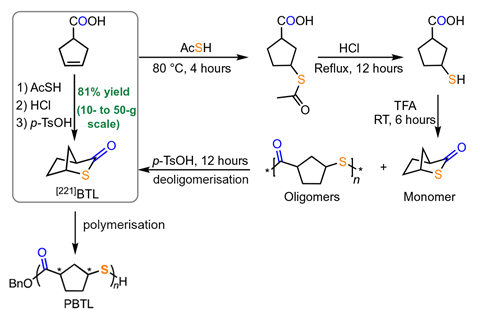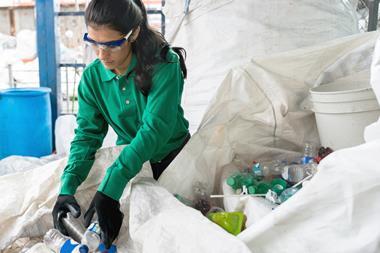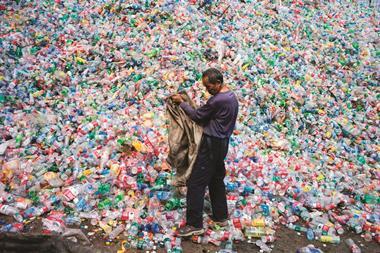An entirely new class of polymers that matches popular plastics’ thermal and mechanical properties but has the potential to be recycled and reused indefinitely has been developed by scientists in the US, China and Saudi Arabia.
Plastic pollution is one of the greatest environmental problems of our time, so creating polymers that can be turned back into their monomer building blocks for reuse is an important goal in materials science. But designing chemically recyclable plastics with desirable properties remains challenging.
Eugene Chen of Colorado State University, US, who led the study together with Laura Falivene from the King Abdullah University of Science and Technology in Saudi Arabia, explains that designing recyclable plastics that can compete with today’s leading materials means dealing with three apparently unbreakable trade-offs. ‘First, polymers that can be easily deconstructed typically don’t exhibit good properties. Second, highly crystalline materials tend to be brittle and easy to break, and third, to achieve high crystallinity for better mechanical properties, one must be able to precisely control the stereochemistry of the polymerisation.’
The team has now prepared a new class of polythioesters that defies these trade-offs. ‘In addition to being fully recyclable, our polymers exhibit high mechanical strength, toughness, ductility and thermal stability,’ says Chen. The team designed a bridged bicyclic thiolactone monomer that is turned into the plastics at room temperature by ring-opening polymerisation. One of the ways to depolymerise the material and recover the monomer proceeds at room temperature within 10 minutes in solution in the presence of an N -heterocyclic carbene. Bulk depolymerisation requires heating to 100°C for 24 hours with a lanthanum catalyst.

Chen notes that the material could offer a sustainable alternative to traditional plastics. ‘Chemical modification of the existing non-recyclable or hard-to-recycle plastics can extend their linear lifetime, but the modified plastics will face the recyclability issue again if there’s no chemical recyclability built into the polymer structure and property by design in the first place,’ he says.
Haritz Sardon, a polymer chemist at the University of the Basque Country in Spain, points out that the materials are semicrystalline without being stereopure, which means that no challenging catalytic procedures are required to control the stereochemistry of the products. ‘Such polymers – named pan-tactic – already exist. The beauty of this work is that the plastics developed here are not only pan-tactic but also fully recyclable,’ he says.
‘The authors designed a polymer that is closer to equilibrium than most of the materials that we use today but that displays some pretty good mechanical properties, which is unusual for materials made in this way,’ comments Andrew Dove who works on degradable biomaterials at the University of Birmingham, UK. ‘The plastic can be depolymerised to make the monomer that can then be reused to make a perfect virgin material.’
‘Contrary to mechanical recycling, which alters the material properties after a few cycles, monomerisation can potentially lead to indefinitely recyclable materials without loss of properties,’ says sustainable polymer researcher Charles Romain of Imperial College London, UK. But he notes that while the monomer synthesis in the lab is promising – producing up to 50g at a time – at larger scales ‘some chemicals may need to be replaced, for example to reduce cost or improve sustainability’.
Chen admits that integrating these polymers into current recycling streams might be challenging. ‘But once separated from the mixed waste stream, the new plastic can be selectively and cleanly deconstructed into its building blocks,’ he says. Dove adds that if recycling systems evolve in line with materials development, chemical recycling could become a more integral part of the value chain.
References
C Shi et al,Sci. Adv., 2020, 6, eabc0495 (DOI: 10.1126/sciadv.abc0495)












No comments yet